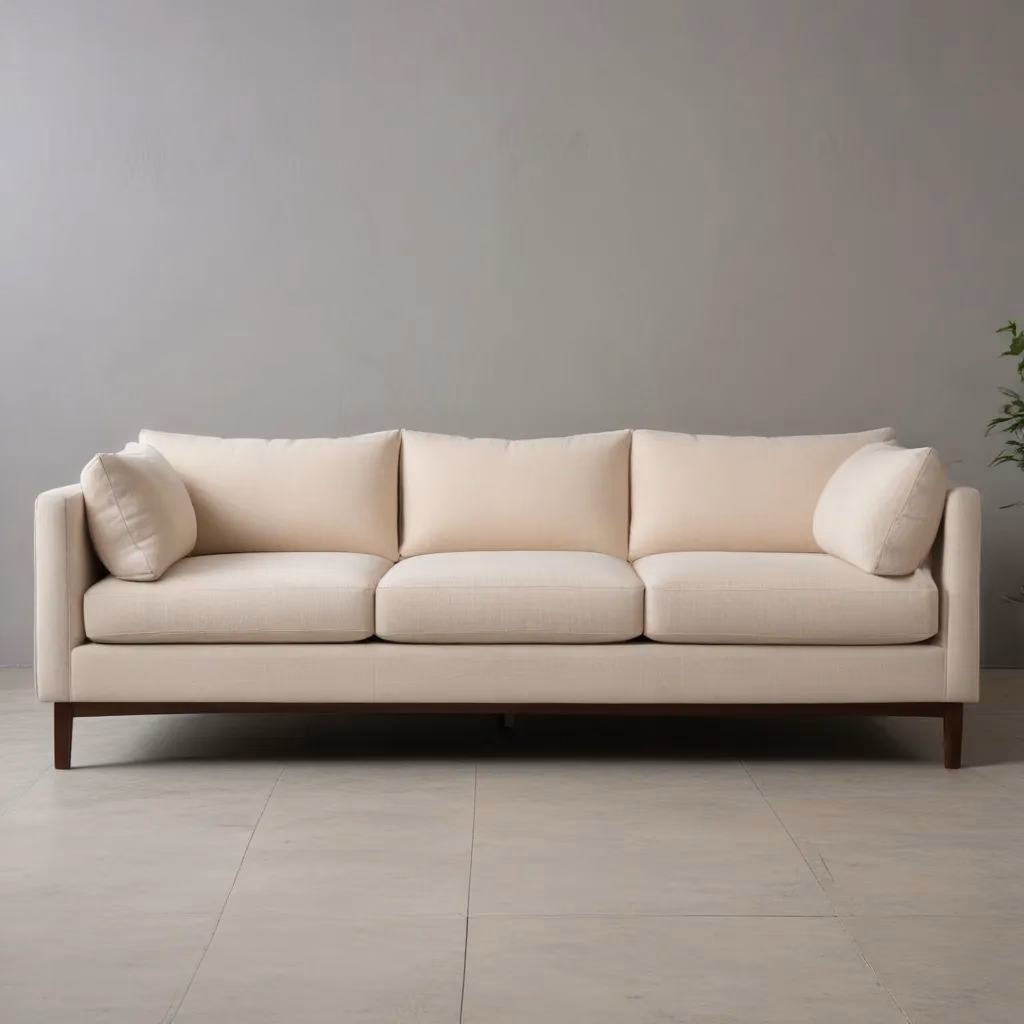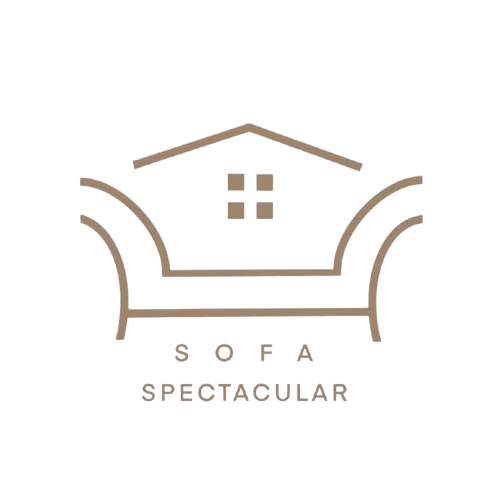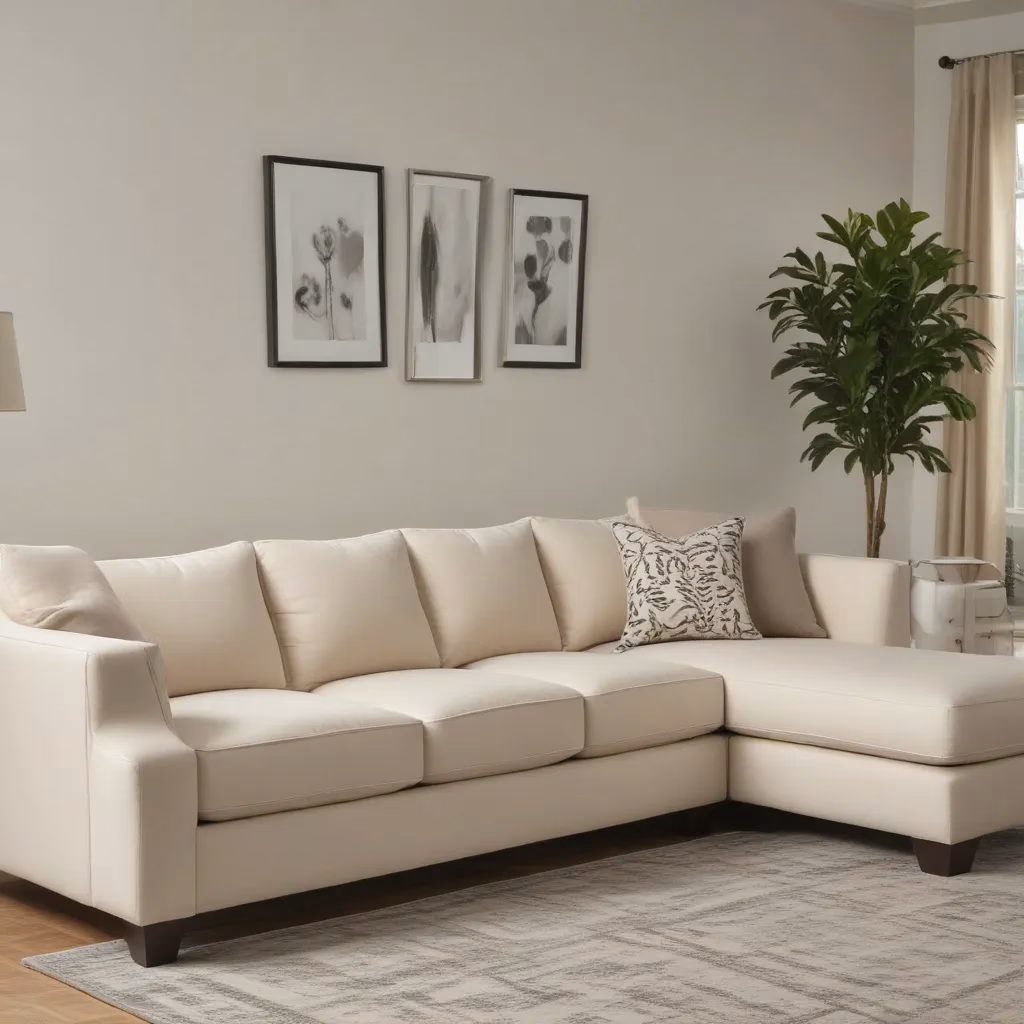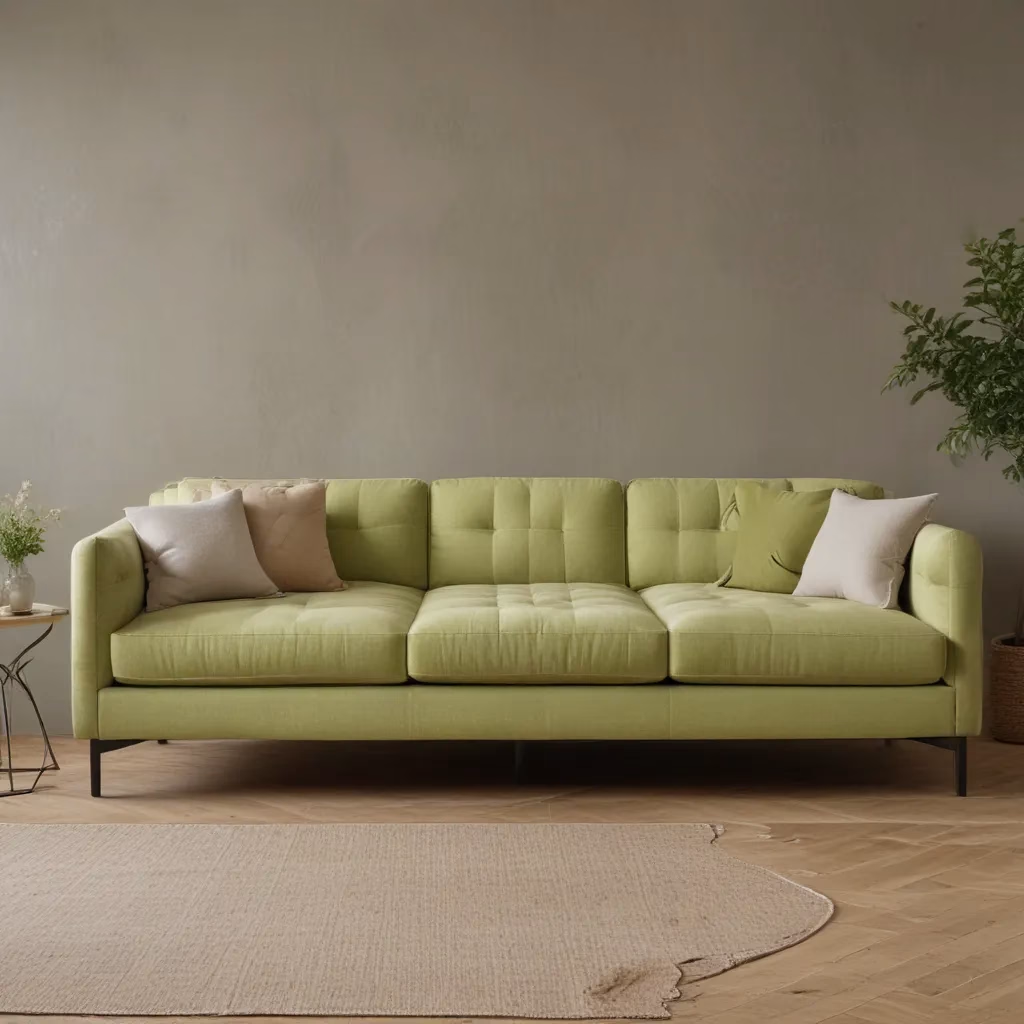
When it comes to furnishing your living room, the sofa is often the centerpiece that anchors the entire space. As the primary seating in most homes, the dimensions and design of your sofa can have a significant impact on the overall comfort, functionality, and aesthetic of the room. Whether you’re seeking a contemporary, streamlined silhouette or a classic, cozy look, understanding the key factors that influence sofa selection is crucial.
Sofa Selection Factors
Understanding Sofa Dimensions
The depth and height of a sofa are two of the most important considerations when choosing the right piece for your living room. The seat depth refers to the measurement from the front edge of the cushion to the back, while the seat height is the distance from the floor to the top of the cushion. These dimensions, along with the overall sofa length, work in tandem to determine the optimal level of comfort and visual balance in your space.
Generally, a seat depth between 21-24 inches is considered the sweet spot for most people. Shallower depths (around 20-22 inches) tend to be more upright and formal, while deeper seats (23-26 inches) offer a more relaxed, lounging experience. When it comes to seat height, the standard range is 15-20 inches, with 18 inches being the most common. Taller individuals or those with mobility concerns may benefit from a slightly higher seating position.
Measuring Your Living Space
Before you even begin browsing for sofas, it’s essential to measure your living room and identify the available space. Consider the dimensions of the room, as well as the placement of doors, windows, and other furniture. Knowing the maximum sofa length, depth, and height that your room can accommodate will help narrow your search and ensure a seamless fit.
Measure the width of the wall or area where you plan to place the sofa, leaving at least 12-18 inches of clearance on each side for easy access and traffic flow. Also, assess the depth of the room – an oversized sofa can make the space feel cramped, while a piece that’s too small may look lost and out of proportion.
Balancing Aesthetics and Function
Achieving the perfect balance between form and function is key when selecting a sofa. While the visual appeal of a piece is important, it’s equally crucial to prioritize comfort and practicality. Consider how you and your family typically use the living room, whether it’s for relaxing, entertaining, or a combination of both.
If your living room doubles as a media hub or cozy nook for reading and conversation, a deeper, lower-to-the-ground sofa with generous seat depth and back height may be the most suitable choice. Conversely, if the space is more formal or you want a cleaner, more streamlined look, a shallower, higher-profile sofa might be the better fit.
Sofa Design Trends
Contemporary Styles
In recent years, the demand for modern, minimalist sofas has surged. These pieces often feature clean lines, low profiles, and sleek upholstery, lending a sophisticated, “less is more” aesthetic to a living room. Many contemporary sofa designs also offer modular flexibility, allowing you to configure the seating to suit your needs and space.
Traditional Influences
While modern and transitional styles have dominated the market, there’s still a strong appreciation for classic, timeless sofa silhouettes. These pieces often draw inspiration from traditional design elements, such as rolled arms, button-tufted backs, and turned legs, creating a more formal and refined ambiance. Many homeowners opt for traditional-inspired sofas to complement period-style or vintage-inspired decor.
Modular Flexibility
Increasingly, homeowners are seeking sofas with modular designs that can be rearranged or expanded to suit their evolving needs. Sectional sofas, for example, offer the flexibility to configure the seating layout to accommodate different room sizes and entertaining scenarios. This modular approach allows for greater customization and adaptability, making it a popular choice for modern living rooms.
Sofa Materials and Construction
Fabric Choices
The fabric you choose for your sofa can have a significant impact on its overall appearance, durability, and maintenance requirements. From classic linen and velvet to performance-oriented options like Crypton and Sunbrella, the fabric selection should consider factors such as desired texture, color, and resistance to wear and stains.
When it comes to families with young children or pets, performance fabrics that are easy to clean and resistant to fading are often the most practical choice. That said, traditional upholstery like cotton or pure wool can also work well, provided you’re willing to commit to regular maintenance and care.
Frame Durability
The construction of the sofa’s frame is a crucial consideration, as it directly influences the long-term structural integrity and stability of the piece. Look for sofas with hardwood or kiln-dried frames, as these materials are less prone to warping, cracking, or sagging over time. Avoid frames made of particleboard or lightweight, engineered woods, as they may not withstand the rigors of everyday use.
Cushion Comfort
The cushions of a sofa play a significant role in determining overall comfort and support. High-quality cushions, often made with high-density foam or a combination of foam and down fill, will provide a plush, sinkable feel that conforms to the body. Alternatively, lower-density foam or fiber-filled cushions may offer a firmer, more supportive seating experience.
Optimizing Sofa Placement
Room Layout Considerations
The placement of your sofa within the living room can either enhance or detract from the overall flow and functionality of the space. When positioning the sofa, consider the room’s dimensions, the location of windows and entryways, and the arrangement of other furnishings. Aim to create a balanced, cohesive layout that encourages conversation and relaxation.
Complementary Furnishings
To achieve a visually harmonious living room, it’s important to select complementary pieces that work in harmony with your chosen sofa. This may include accent chairs, coffee tables, side tables, and area rugs that complement the sofa’s style, scale, and color palette. Thoughtful coordination of these elements can help tie the room together and create a polished, intentional design.
Traffic Flow Accommodation
Be mindful of the sofa’s placement in relation to the room’s main traffic patterns. Ensure that there is ample clearance around the sofa to allow for easy movement and navigation, particularly in high-traffic areas. This not only enhances the room’s functionality but also contributes to a better overall aesthetic by preventing the space from feeling cramped or cluttered.
Sofa Care and Maintenance
Fabric Upkeep
Proper care and maintenance of your sofa’s fabric are essential for preserving its appearance and longevity. Regularly vacuum the upholstery to remove dust and dirt, and spot-clean any spills or stains promptly using the appropriate cleaning methods for the fabric type. For more thorough cleanings, consider having the sofa professionally steam-cleaned every 12-18 months, depending on the level of use and wear.
Frame Preservation
To keep the sofa’s frame in top condition, inspect it periodically for any signs of wear or damage, such as loose joints or scratches. Tighten any loose screws or hardware, and consider applying a wood conditioner or polish to the frame to protect it from drying out or discoloration.
Cushion Fluffing
Regularly fluffing and rotating the sofa’s cushions can help maintain their shape and support. This simple task not only keeps the sofa looking its best but also prolongs the life of the cushions by preventing uneven wear and compression.
Cost Considerations
Budget-Friendly Options
For homeowners on a tighter budget, there are plenty of budget-friendly sofa options that still offer quality construction and stylish designs. Look for pieces from mass-market retailers or online-only brands, which often provide a more accessible price point without sacrificing too much in terms of comfort and durability.
Premium Investments
At the other end of the spectrum, high-end, luxury sofas can be a significant investment but may offer superior craftsmanship, materials, and customization options. These premium pieces are often built to last for decades and can be passed down through generations, making them a worthwhile consideration for homeowners seeking a timeless, heirloom-quality sofa.
Value-Added Features
When evaluating the cost of a sofa, consider the value-added features that may enhance its overall functionality and longevity. Features like removable cushion covers, built-in USB charging ports, or adjustable headrests can add to the sofa’s versatility and convenience, potentially justifying a higher price tag.
Styling Your Living Room
Coordinating Decor
The sofa you choose will serve as the foundation for the living room’s overall aesthetic, so it’s crucial to select a piece that complements the existing decor and color scheme. Consider the room’s architectural details, lighting, and other furnishings when choosing a sofa that will seamlessly integrate into the space.
Accent Pieces
Incorporating complementary accent pieces, such as throw pillows, blankets, and side tables, can help elevate the visual interest and cohesion of the living room. These smaller furnishings and accessories can be used to introduce pops of color, texture, and personal style that enhance the sofa’s design.
Lighting and Ambiance
The placement and style of lighting fixtures in the living room can also impact the overall look and feel of the space. Strategically positioned floor lamps, table lamps, and overhead lighting can help create a warm, inviting ambiance that complements the sofa and the overall design aesthetic.
Sofa Buying Checklist
To ensure a successful sofa-purchasing experience, consider the following checklist:
Essential Measurements
- Room Dimensions: Measure the available floor space and identify the maximum sofa size that will fit comfortably.
- Sofa Depth: Determine the ideal seat depth (typically 21-24 inches) based on your personal preferences and living room layout.
- Sofa Height: Consider the optimal seat height (usually 15-20 inches) for your needs and comfort level.
- Sofa Length: Measure the wall space where the sofa will be placed and choose a length that fits the room proportions.
Feature Priorities
- Fabric Type: Select a durable, easy-to-clean fabric that aligns with your lifestyle and aesthetic preferences.
- Frame Construction: Opt for a sturdy, hardwood frame that will withstand years of use.
- Cushion Comfort: Prioritize high-quality cushions that provide the desired level of support and plushness.
- Modular Flexibility: Consider a sectional or modular design if you value the ability to reconfigure the seating layout.
Purchase Logistics
- Delivery and Installation: Ensure the sofa can be easily delivered and maneuvered into your living room, taking measurements of doorways and stairwells as needed.
- Warranty and Returns: Familiarize yourself with the manufacturer’s warranty and return policy in case any issues arise after purchase.
- Coordinating Decor: Plan ahead for complementary accent pieces, such as pillows and throws, to complete the living room’s cohesive design.
By considering these key factors, you’ll be well on your way to finding the perfect sofa that not only looks amazing but also provides the comfort and functionality your living room deserves. Happy shopping, and may your search for the ideal sofa depth and height be a success!
For more inspiration and expert advice, be sure to visit Sofa Spectacular – your one-stop destination for all things sofa, furniture, and home decor.



